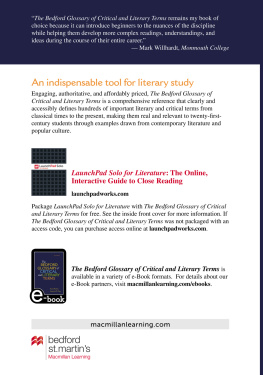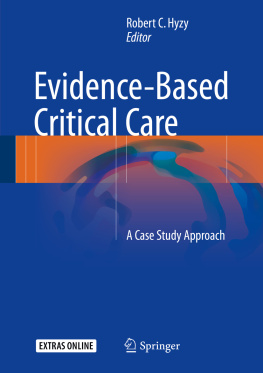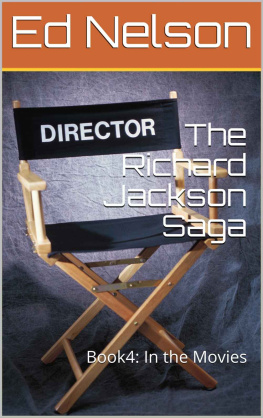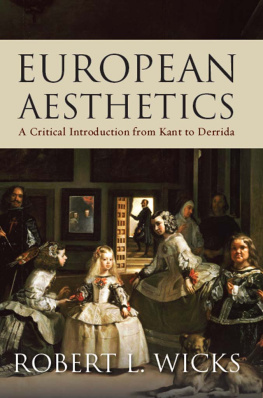Robert S. Nelson - Critical Terms for Art History, Second Edition
Here you can read online Robert S. Nelson - Critical Terms for Art History, Second Edition full text of the book (entire story) in english for free. Download pdf and epub, get meaning, cover and reviews about this ebook. City: Chicago, year: 2003, publisher: The University of Chicago Press, genre: Art. Description of the work, (preface) as well as reviews are available. Best literature library LitArk.com created for fans of good reading and offers a wide selection of genres:
Romance novel
Science fiction
Adventure
Detective
Science
History
Home and family
Prose
Art
Politics
Computer
Non-fiction
Religion
Business
Children
Humor
Choose a favorite category and find really read worthwhile books. Enjoy immersion in the world of imagination, feel the emotions of the characters or learn something new for yourself, make an fascinating discovery.

- Book:Critical Terms for Art History, Second Edition
- Author:
- Publisher:The University of Chicago Press
- Genre:
- Year:2003
- City:Chicago
- Rating:3 / 5
- Favourites:Add to favourites
- Your mark:
- 60
- 1
- 2
- 3
- 4
- 5
Critical Terms for Art History, Second Edition: summary, description and annotation
We offer to read an annotation, description, summary or preface (depends on what the author of the book "Critical Terms for Art History, Second Edition" wrote himself). If you haven't found the necessary information about the book — write in the comments, we will try to find it.
Critical Terms for Art History, Second Edition — read online for free the complete book (whole text) full work
Below is the text of the book, divided by pages. System saving the place of the last page read, allows you to conveniently read the book "Critical Terms for Art History, Second Edition" online for free, without having to search again every time where you left off. Put a bookmark, and you can go to the page where you finished reading at any time.
Font size:
Interval:
Bookmark:


Critical Terms for Art History
Second Edition
Edited by Robert S. Nelson
and Richard Shiff
THE UNIVERSITY OF CHICAGO PRESS
CHICAGO AND LONDON
Robert S. Nelson is the Distinguished Service Professor of Art History and History of Culture at the University of Chicago. He has edited Visuality before and beyond the Renaissance: Seeing as Others Saw (2000) and with Margaret Olin Monument and Memory Made and Unmade (2003). His book Holy Wisdom Modern Monument: Hagia Sophia 1850-1950 is forthcoming.
Richard Shiff is the Effie Marie Cain Regents Chair in Art and director of the Center for the Study of Modernism at the University of Texas at Austin. He is the author of Czanne and the End of Impressionism: A Study of the Theory, Technique, and Critical Evaluation of Modern Art.
The University of Chicago Press, Chicago 60637
The University of Chicago Press, Ltd., London
1996, 2003 by The University of Chicago
All rights reserved. Published 2003
Printed in the United States of America
12 11 10 09 08 07 06 05 04 03 1 2 3 4 5
ISBN: 0-226-57166-1 (cloth)
ISBN: 0-226-57168-8 (paper)
Library of Congress Cataloging-in-Publication Data
Critical terms for art history / edited by Robert S. Nelson and Richard Shiff.2nd ed.
p. cm.
Includes bibliographical references and index.
ISBN 0-226-57166-1 (cloth)ISBN 0-226-57168-8 (paper)
1. ArtHistoriographyTerminology. 2. English languageTerms and phrases.
I. Nelson, Robert S., 1947- II. Shiff, Richard.
N34.C75 2003
701'.4dc21
2002035978
The paper used in this publication meets the minimum requirements of the American National Standard for Information SciencesPermanence of Paper for Printed Library Materials, ANSI Z39.48-1992.
Y2K has come and gone and those curious letters have passed into oblivion. A technologically sophisticated world managed to contain its surprisingly medieval fear of dates and technology and has moved on. But to where? At the end of the millennium, retrospection, much of it simplistic, was to be read everywhere. It too has passed, and the question remains, what's next? Or in regard to the subjects of this book, where is art history headed in the first decade of the twenty-first century? Predictions are always risky. A few years after they are made, they appear either obvious or ridiculous and thus are to be avoided. But the need to think forward is not so easily dismissed. The students for whom this book is intended have to make choices about topics and methods. Established scholars can work from the archives they have assembled over the years and apply to them different methods, but since those bodies of material were initially determined by older methods, the results are not always as innovative as some might think. Other senior scholars, challenged by change, resist it and reassert the past by calling for a return to standards, usually defined as the state of the discipline that existed when they were students. But neither option is available to beginning students, and no one can return to the past. Thus everyone must daily make decisions about how to proceed, how to respond to past art for present audiences, how to work with the means, rhetorics, and subjects of contemporary art history. Those many small decisions determine the course of the larger discourse and its ability to make art meaningful for students, readers, museum visitors, and the many audiences that enjoy art in our worlds.
At present, it can be said that the art history as practiced in certain quarters at the beginning of the twenty-first centurywhat some like to call the New Art Historylooks in many ways like versions of the old. Some might say that the change is more apparent than real. Indeed, in certain guises and especially when it only bears the veneer of newness, the New Art History cannot be distinguished from certain approaches popular during the later part of the last century. The New Art History is often historicist, like many varieties of prior scholarship, and like them values objects, documents, historical data, and all that would facilitate an investigation of contextual meanings. It also is concerned with form, or the ways in which visual artifacts communicate and express their messages. In fact, at the core of some recent work is a relentless concern for form and expression that is as focused and as resolutely nonhistorical as the work of any New Critic or arch Formalist. It is in this sense that the purer representatives of poststructuralism or deconstruction merge with prestructuralism and earlier twentieth-century formalism.
But while it might be comforting to imagine that the new is only a variation on the old, merely a subtle shift in taste and practice occasioned by a new generation adopting and adapting the methods of their teachers, the illusion does not survive closer inspection. What distinguishes the new from the old is a commitment to the processes of mediation, the ways in which knowledge is constructed, conveyed, replicated, instilled, and maintainednot only the past works of art, their creation, patronage, and social function, but also the knowledges that art historians create. For example, it is important to describe the formal basis of the style of the Ara Pacis, to appreciate the beauty of its reliefs and the naturalism of its ornament, and to understand the position of its program within the ideology of power of the emperor Augustus. But it is also incumbent upon the art historian to attend to the ways in which such scholarship is constructed, framed, and used in our world, from the fascist enclosure around the altar to the position that studies of the art of Augustus play in the maintenance of the hierarchy and progress of knowledge about the Roman Empire, and further to the employment of these knowledges in the sustenance of interpretative communities of our world, whether archaeological institutes, art history departments, classics programs, or nation-states and the constitution of Eurocentricism.
Attention to mediation requires that the history of art history be taken from the backroom or the toolshed on the margins of the estates of art history and placed in some central room of the great house, for historiography, when it is not hagiography, is a means of understanding how art historians turn art into history and a way of exploring what they decide to keep and what to discard. Mediation encourages attention to the rhetoric of art history, as well as the rhetoric of art, so that visual and verbal communications become important themes within new work. By a similar process, attention has once again turned to visual perception and to those older subjects of the psychology and physiology of perception, although conducted from different premises. The person of the artist and the procedures, methods, and conditions of art making have also been of interest lately. Mediation also requires that we consider the viewers, writers, and teachers of art and the institutions that display it. Whose history is being written, performed, or installed? What regions of the world are being prioritized? What is the social and ideological role of the grand surveys that we profess, and who is that we?
Globalism, or rather the contest between the local and the global, dominates many discourses today, cultural, economic, and political, so that it is inevitable that it would affect art history. But other developments are also changing the discipline, sometimes quickly and overtly, at other times more patiently and subtly. For these reasons, we felt that a second edition of our book was needed. To the twenty-two essays of the first edition, we have added nine new ones. Some deal with older concepts not heretofore discussed, such as style, which, it is argued, is still not only relevant for art history, but foundational. The concept of beauty a few years ago was thought germane only to philosophical aesthetics, but beauty and its opposite, ugliness, of course never actually disappeared from art history and have lately become a vital means of engaging contemporary art and culture. The articles on performance, identity, body, and memory/monument describe contexts, practices, and artworks that have stimulated and been stimulated by recent social and political changes. The social art history is here discussed, not as usual in regard to European or American art, but to Chinese art. The article presents the possibility that social art history is defined by the phenomena it purports to analyze as much as it defines them. Finally, the essay on visual culture introduces a concept that some think has already become an established subdiscipline, one critical to the future of art history if it is not to be left behind by rapid technological innovation. Others, on the other hand, want to marginalize or banish the subject from art history proper. It, like the other terms included, helps us see the current operations of the discipline of art history and the disciplinary debates over issues of mediation. Indeed, our volume in either its first or second edition is a symptom of the current state of art history, as well as a guide to it.
Font size:
Interval:
Bookmark:
Similar books «Critical Terms for Art History, Second Edition»
Look at similar books to Critical Terms for Art History, Second Edition. We have selected literature similar in name and meaning in the hope of providing readers with more options to find new, interesting, not yet read works.
Discussion, reviews of the book Critical Terms for Art History, Second Edition and just readers' own opinions. Leave your comments, write what you think about the work, its meaning or the main characters. Specify what exactly you liked and what you didn't like, and why you think so.











